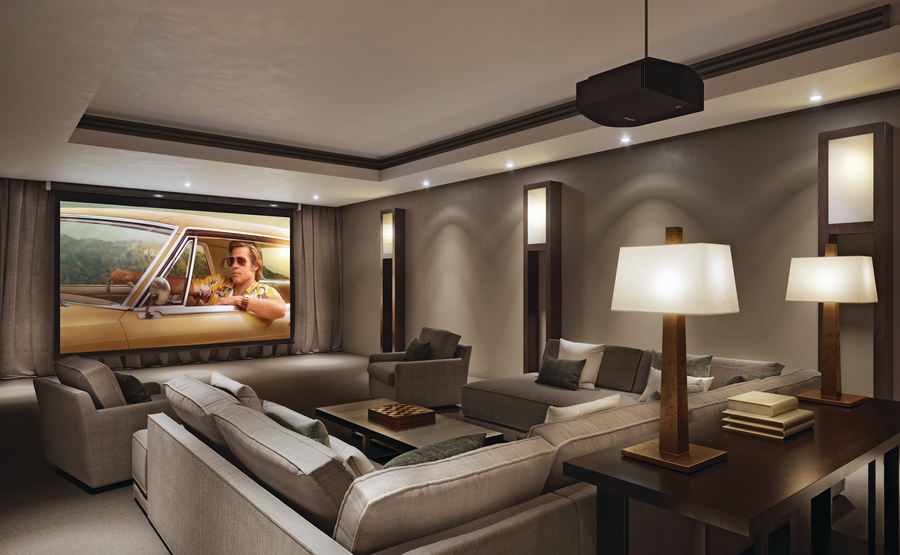Want the Best Sound from Your Home Theater Installation?
How Room Correction Fixes Audio Problems in Your Home Theater

What is room correction? No, we’re not talking here about moving walls around to fix your room. We are talking about how your home theater audio system sounds in your room. For those of you that are audio aficionados of either the two-channel or multichannel type (or both), you may already be familiar with this. It’s the use of calibration software and methods for adjusting a sound system for even, natural sound in a media room or theater.
Why is room correction important for your home theater installation in Buckhead? Because every room is different, and even the best equipment and speakers may not sound quite like you expect without a little corrective help. Keep reading for a quick view of room correction and how it can help your sound quality. Or, skip the rest of the blog and call us; as metro Atlanta’s premier home theater company for over 30 years, we can expertly calibrate your home theater or media room for superb sound!
SEE ALSO: Want to Get the Most Out of Your Home Theater Installation?
Every Room Sounds Different
Rooms sound different for various reasons. The layout might be rectangular, square, or irregular. In today’s open concept homes where spaces flow into each other, asymmetrical and open walls can wreak havoc with surround sound setups. Many homeowners choose home theater setups in these types of spaces, but they still want great sound. Furnishings, finishes, windows, and other factors affect the sound too. While room correction can't fix all physical ailments in a room, it can significantly improve sound quality in even very challenging spaces.
How Does Room Correction Work
The premise behind room correction is to achieve a target sound curve so that at the prime listening positions, you get the right balance of sound frequencies. In a home theater, you want deep, powerful bass, the kind that punches crisply for gunshots and engine roar and rumbles way low for massive explosions and train wrecks.
What you don't want is bass that sounds muddy, boomy, or just rumbles on everything. A significant challenge in many rooms is even bass response across all the seating positions. With midrange frequencies, like voices and dialogue, you want the right sound level and tone, so they sound natural and come through even in the gnarliest action scenes. What about high frequencies? You want them not to hurt your ears! There's a delicate balance between screeching sounds and music notes delivering their full dynamic range and being physically painful to experience. All of this is part of achieving the target curve in the room that brings out the dynamics of soundtracks but does not overemphasize any parts of the frequency range.
Truth be told, while general standards exist for how these frequencies should sound, everyone's ears are different too, and the volume at which people listen also matters. So, there is fine-tuning that can be done with room correction for personal preferences.
The typical room correction system works by using a listening microphone placed at one or various listening positions. The system outputs test tones through the speakers, measuring distances, levels, and aspects of room acoustics. The goal is to have all the sounds reach the listening position at the same time and evenly. The system then adjusts the speaker levels based on distances and room acoustics, using sophisticated algorithms based on audio science and physics to balance that audio curve for a natural sound.
These days, room correction is built into many audio products. Sonos, for example, includes a form of it in its wireless speakers. Most commonly, it is found in home theater receivers from all the major companies. One of the best, Anthem Room Correction (ARC), is included in Anthem audio equipment, one of GHT’s premier home theater brands.
Fine Tuning
No room correction system is perfect. In most cases, they can provide a great baseline from which the system can be fine-tuned. For many home theaters, the process is done manually, and software that measures sound pressure and frequency response aids calibrators precisely dial in the sound for a room.
GHT group, having been building home theaters for decades, has audio experts with deep experience in this area. Moreover, if we have the privilege of designing a home theater from scratch for you, the audio performance will be an integral part of the design. We take your vision and build the plan around it, which will affect speaker placement, positioning, installation, acoustic treatment, seating, and many other factors to get the immersive sound you want. And when it's all installed, the sound is fine-tuned using the methods we discussed with careful manual tweaking.
Want the best possible sound in your home theater or media room? Contact us here, make an appointment to visit our showroom, or use the chat box below to connect with one of our audio experts quickly. We look forward to working with you!